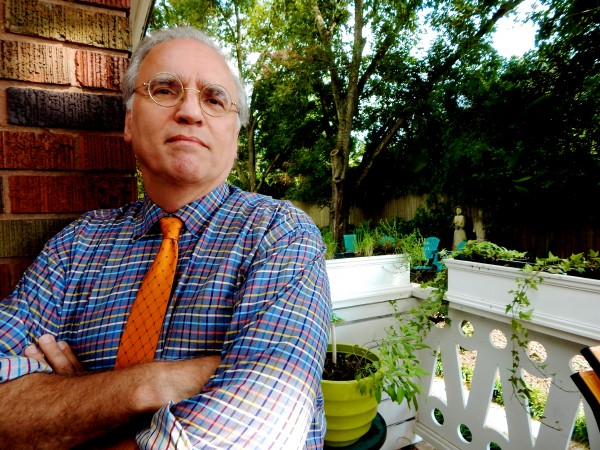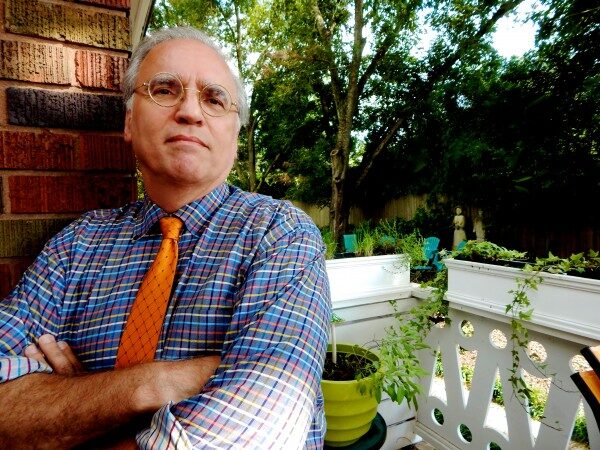Talk West is a new series of sorts where we get to ask interesting people a few questions. Fittingly, Talk West starts with Luke Sullivan, one of the better advertising copywriters to ever scrawl out a headline.

I was first introduced to Luke Sullivan via his book, Hey Whipple, Squeeze This, now in its fifth edition. As a rookie copywriter, he and co-author Edward Boches helped me understand the business of creativity and gave me the language I needed to sell my ideas. Over the years, I’ve revisited the book or The Gospel According to Luke in Ad Age numerous times, particularly when I’m stuck or need a reminder of the basics.
A decade later we crossed paths at a client’s office while working at different shops on the same agency roster. As a newly minted Creative Director, it was invaluable for me to see how Luke connected creative to the strategy, and how he sold ideas.
| CA: What’s your favorite campaign of late? LS: Pretty much anything by Droga5 gets my attention these days. They just seem to be doing the most ground-breaking work. Their Clearasil “We Don’t Know Teens” campaign was such an authentic way to get under the snark-radar of teens. I just loved it. CA: How do you believe storytelling has changed since you started in the business? LS: Yes, storytelling has changed, in my opinion. In the old days (my old days, anyway), there wasn’t time to do any substantial brand storytelling, not within the format of paid media. A thirty-second TV spot or a sixty in radio do not provide much time to turn the engine over and really get a story started. The brevity of the paid message format did, however, force us to think clearly and forcefully. It taught us how to get right to the point and it sharpened one’s copywriting and art direction skills. Those skills are just as relevant and are portable across different media, including from traditional to digital. Now we have more time, and infinite media. CA: What surprises you about the students you work with at SCAD? LS: Kids who apply for, and are accepted to, art schools like SCAD have already self-identified as creative. When I went to college, there weren’t many art schools, and if there were, well, it didn’t seem like a good idea at the time. “How am I gonna pay the rent with art?” Fathers might growl, “No son of mine is gonna waste tuition as some ‘ot’ school.” And it’s worth noting how it takes a kind of bravery to raise your hand in high school and say, “I am creative.” Because of this, my students all seem to fit nicely into that famous Island of Misfit Toys. They are a cynical, free-thinking bunch of kids and most of them are surprised to learn that advertising doesn’t have to suck, that truth is more powerful than any “claim”. CA: What piece of advice do you offer your students as they head out into the world? LS: Hit the ground running. Life in the classroom is about 1/8th the speed of life in an agency. There is no “I don’t feel like goin’ to class today.” There is no telling the CD how you “just couldn’t come up with lots of great stuff.” There is no “Can I turn in my stuff tomorrow?” Start fast and blow them away. CA: Beyond Hey Whipple, Squeeze This (of course), what books do you recommend for everyone out there trying to do great things in marketing and advertising? LS: Pete Barry’s book, The Advertising Concept Book: Think Now, Design Later, is great. Pick Me: Breaking into Advertising and Staying There, by Janet Kestin and Nancy Vonk. These are just two of my faves. There are many other great ad books, most of which I captured in the Recommended Reading section in the back of the fifth edition of my book, Hey Whipple, Squeeze This. Luke now chairs the advertising program at the Savannah College of Art and Design in Georgia. And if you’re a student there, or in the first half of your career, you’re probably wondering what a Whipple is, and asking ,”what he’s squeezing?” For an explanation, I give you Mr. Whipple, whose TV career inexplicably spanned three decades. |
Thanks, Luke.

